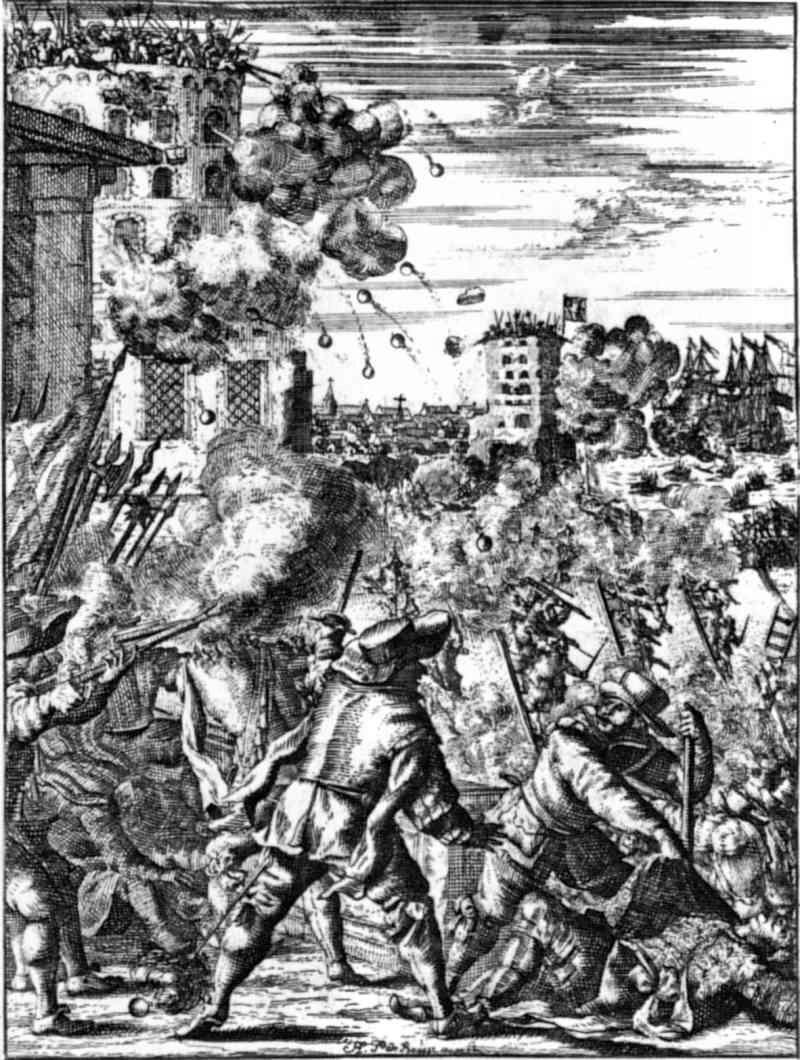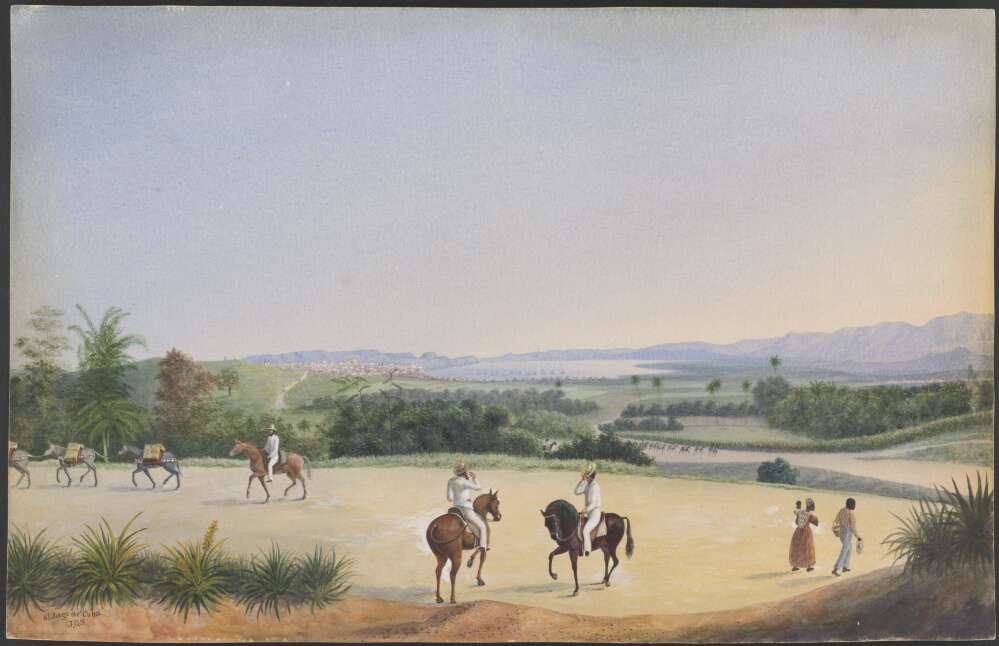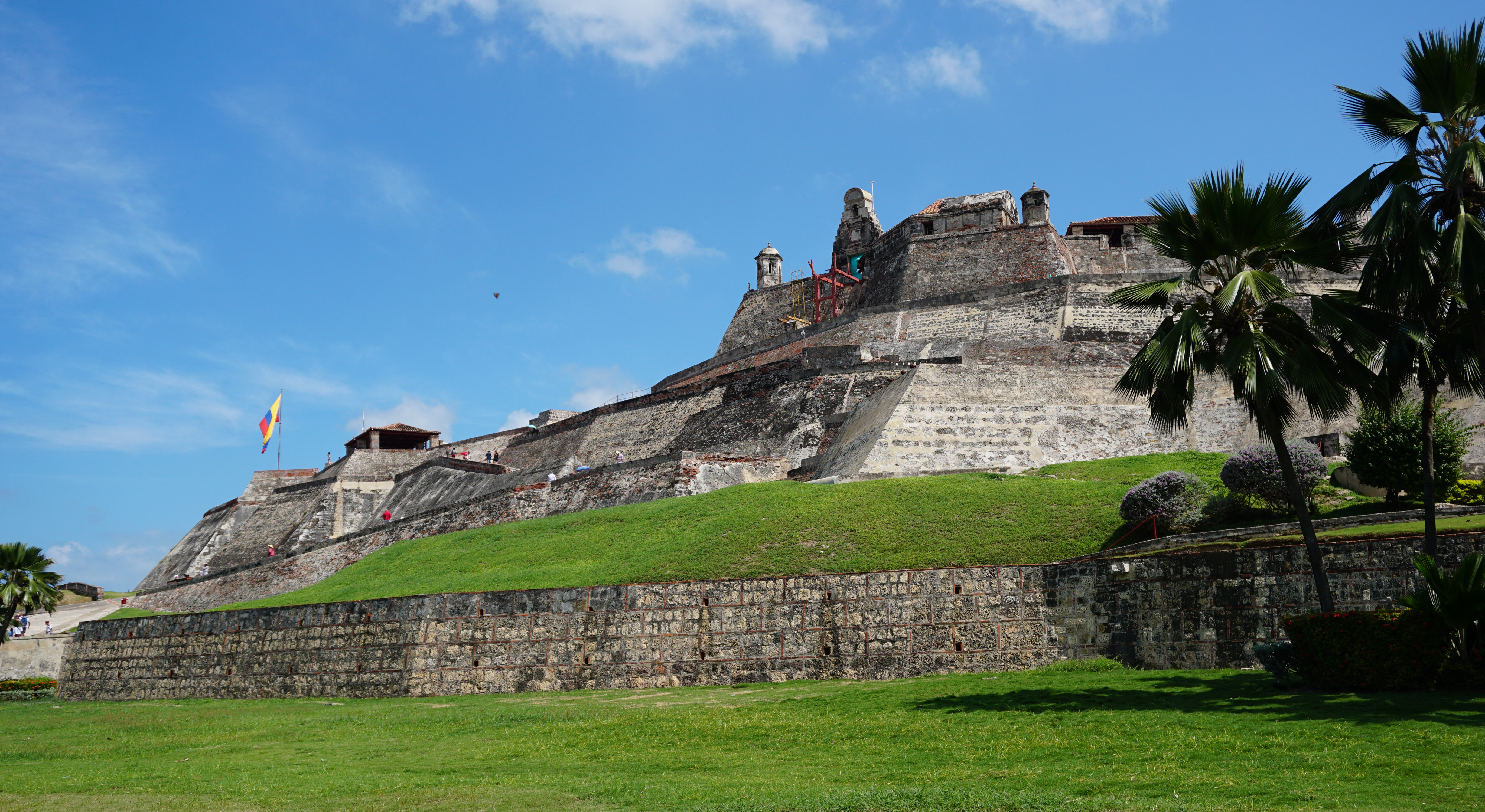|
Gooch's American Regiment
Gooch's American Regiment was a Regiment of Foot recruited in British North America, and put on the British establishment. It served in the expedition to Cartagena 1741, suffering heavy losses primarily from sickness. The regiment had a poor reputation and was regarded as undisciplined. It was severely neglected by the British government, and by the British military leadership, who did not feed or pay them at the base in Jamaica, and misused them as seamen during the expedition. Formation During the War of Jenkins' Ear, a major British assault on Cartagena de Indias was planned and carried out. The British government urged its colonies in North America to raise soldiers for this undertaking; the 3,000 men asked for were rapidly reached and exceeded. Only Virginia used impressment, forcing former indentured servants and convicts to enlist. Pennsylvania enlisted 300 indentured servants that volunteered, thereby breaching their indenture. Massachusetts raised five companies; Rhode Isl ... [...More Info...] [...Related Items...] OR: [Wikipedia] [Google] [Baidu] |
British America
British America comprised the colonial territories of the English Empire, which became the British Empire after the 1707 union of the Kingdom of England with the Kingdom of Scotland to form the Kingdom of Great Britain, in the Americas from 1607 to 1783. Prior to the union, this was termed ''English America'', excepting Scotland's failed attempts to establish its own colonies. Following the union, these colonies were formally known as British America and the British West Indies before the Thirteen Colonies declared their independence in the American Revolutionary War (1775–1783) and formed the United States of America. After the American Revolution, the term ''British North America'' was used to refer to the remainder of Great Britain's possessions in North America. The term British North America was used in 1783, but it was more commonly used after the ''Report on the Affairs of British North America'' (1839), generally known as the '' Durham Report''. History A ... [...More Info...] [...Related Items...] OR: [Wikipedia] [Google] [Baidu] |
George Washington
George Washington (February 22, 1732, 1799) was an American military officer, statesman, and Founding Fathers of the United States, Founding Father who served as the first president of the United States from 1789 to 1797. Appointed by the Continental Congress as commander of the Continental Army, Washington led the Patriot (American Revolution), Patriot forces to victory in the American Revolutionary War and served as the president of the Constitutional Convention (United States), Constitutional Convention of 1787, which created the Constitution of the United States and the American federal government. Washington has been called the "Father of the Nation, Father of his Country" for his manifold leadership in the formative days of the country. Washington's first public office was serving as the official Surveying, surveyor of Culpeper County, Virginia, from 1749 to 1750. Subsequently, he received his first military training (as well as a command with the Virginia Regiment) d ... [...More Info...] [...Related Items...] OR: [Wikipedia] [Google] [Baidu] |
Waistcoat
A waistcoat ( UK and Commonwealth, or ; colloquially called a weskit), or vest ( US and Canada), is a sleeveless upper-body garment. It is usually worn over a dress shirt and necktie and below a coat as a part of most men's formal wear. It is also sported as the third piece in the traditional three-piece male suit. Any given waistcoat can be simple or ornate, or for leisure or luxury. Historically, the waistcoat can be worn either in the place of, or underneath, a larger coat, dependent upon the weather, wearer, and setting. Daytime formal wear and semi-formal wear commonly comprises a contrastingly coloured waistcoat, such as in buff or dove gray, still seen in morning dress and black lounge suit. For white tie and black tie, it is traditionally white and black, respectively. Name The term ''waistcoat'' is used in the United Kingdom and many Commonwealth countries. The term ''vest'' is used widely in the United States and Canada, and is often worn as part of ... [...More Info...] [...Related Items...] OR: [Wikipedia] [Google] [Baidu] |
Hammock
A hammock (from Spanish , borrowed from Taíno and Arawak ) is a sling made of fabric, rope, or netting, suspended between two or more points, used for swinging, sleeping, or resting. It normally consists of one or more cloth panels, or a woven network of twine or thin rope stretched with ropes between two firm anchor points such as trees or posts. Hammocks were developed by native inhabitants of the Americas for sleeping, as well as the English. Later, they were used aboard ships by sailors to enable comfort and maximize available space, by explorers or soldiers travelling in wooded regions and eventually by parents in the early 1920s for containing babies just learning to crawl. Today they are popular around the world for relaxation; they are also used as a lightweight bed on camping trips. The hammock is often seen as a symbol of summer, leisure, relaxation and simple, easy living. Etymology The word ''hammock'' comes, via Spanish, from a Taíno culture Arawakan word mea ... [...More Info...] [...Related Items...] OR: [Wikipedia] [Google] [Baidu] |
John William Fortescue
The Honourable Sir John William Fortescue (28 December 1859 – 22 October 1933) was a British military historian. He was a historian of the British Army and served as Royal Librarian and Archivist at Windsor Castle from 1905 until 1926. Early life Fortescue was born on 28 December 1859 in Madeira, the 5th son of Hugh, 3rd Earl Fortescue, by his wife Georgina, Countess Fortescue (née Dawson-Damer). His family owned much of the area around Simonsbath on Exmoor since the twelfth century, thus he joined the North Devon Yeomanry Cavalry latterly serving as a major. Fortescue was educated at Harrow School and Trinity College, Cambridge, later lecturing at Oxford ( DLitt (Oxon)). Career Fortescue is best known for his major work on the history of the British Army, which he wrote between 1899 and 1930. Between 1905 and 1926 he worked as the Royal Librarian at Windsor Castle. In 1911, Fortescue delivered the Ford Lectures at Oxford University. In 1920 he delivered the British ... [...More Info...] [...Related Items...] OR: [Wikipedia] [Google] [Baidu] |
Portobelo, Colón
Portobelo (Modern Spanish: "Puerto Bello" ("beautiful port"), historically in Portuguese: Porto Belo) is a historic port and corregimiento in Portobelo District, Colón Province, Panama, Central America, with a population of 4,559 . Located on the northern part of the Isthmus of Panama, it is northeast of the modern port of Colón now at the Atlantic entrance to the Panama Canal. It functions as the seat of Portobelo District. Established in 1597 during the time of the Spanish empire due to its deep natural harbor, it served as one of the two ports (together with Veracruz to the northwest) through which Spanish treasure was shipped from the mines of Peru (via Panama City on the Pacific side of the Isthmus and overland to Portobelo) back to Spain. The city was repeatedly captured by British privateers and pirates, culminating in a successful siege by the Royal Navy in 1739, during the War of Jenkin's Ear. Its economy received a major boost in the late-19th century during ... [...More Info...] [...Related Items...] OR: [Wikipedia] [Google] [Baidu] |
Santiago De Cuba
Santiago de Cuba is the second-largest city in Cuba and the capital city of Santiago de Cuba Province. It lies in the southeastern area of the island, some southeast of the Cuban capital of Havana. The municipality extends over , and contains the communities of Antonio Maceo, Bravo, Castillo Duany, Daiquirí, El Caney, El Cobre, El Cristo, Guilera, Leyte Vidal, Moncada and Siboney. Historically Santiago de Cuba was the second-most important city on the island after Havana, and remains the second-largest. It is on a bay connected to the Caribbean Sea and an important sea port. In the 2012 population census, the city of Santiago de Cuba recorded a population of 431,272 people. History Santiago de Cuba was the fifth village founded by Spanish conquistador Diego Velázquez de Cuéllar on July 25, 1515. The settlement was destroyed by fire in 1516, and was immediately rebuilt. This was the starting point of the expeditions led by Juan de Grijalba and Hernán Cortés to the ... [...More Info...] [...Related Items...] OR: [Wikipedia] [Google] [Baidu] |
Guantánamo Bay
Guantánamo Bay ( es, Bahía de Guantánamo) is a bay in Guantánamo Province at the southeastern end of Cuba. It is the largest harbor on the south side of the island and it is surrounded by steep hills which create an enclave that is cut off from its immediate hinterland. The United States assumed territorial control over the southern portion of Guantánamo Bay under the 1903 Lease. The United States exercises jurisdiction and control over this territory, while recognizing that Cuba retains ultimate sovereignty. The government of Cuba regards the U.S. presence in Guantánamo Bay as an illegal occupation on the basis that the Cuban–American Treaty "was obtained by threat of force and is in violation of international law." Some legal scholars judge that the lease may be voidable. It is the home of the Guantanamo Bay Naval Base and the Guantanamo Bay detention camp located within the base, which are both governed by the United States. Since the 1959 revolution, Cuba has onl ... [...More Info...] [...Related Items...] OR: [Wikipedia] [Google] [Baidu] |
Invasion Of Cuba (1741)
The invasion of Cuba took place between 4–5 August and 9 December 1741 during the War of Jenkins' Ear. A combined army and naval force under the command of Admiral Edward Vernon and Major-General Thomas Wentworth arrived off Cuba and fortified positions around their landing site at Cumberland Bay. Despite facing no serious opposition, neither commander felt prepared to advance on the Spanish settlement at Santiago de Cuba. Harassed by Spanish raids and with a mounting sick list, the British finally evacuated the island after several months of inactivity. Background Vernon had made an unsuccessful attempt to capture Cartagena in 1741, and after his repulse he directed the fragments of his sickly and dispirited followers against the island of Cuba. The south and east of Cuba were so little populated, and so far from the capital, Havana, that they might have made a permanent establishment there. Vernon's expedition The land forces consisted of the remnants of the troops from C ... [...More Info...] [...Related Items...] OR: [Wikipedia] [Google] [Baidu] |
Outwork
An outwork is a minor fortification built or established outside the principal fortification limits, detached or semidetached. Outworks such as ravelins, lunettes (demilunes), flèches and caponiers to shield bastions and fortification curtains from direct battery were developed in the 16th century. Later, the increasing scale of warfare and the greater resources available to the besieger accelerated this development, and systems of outworks grew increasingly elaborate and sprawling as a means of slowing the attacker's progress and making it more costly. When taken by an enemy force, their lack of rear-facing ramparts left them totally open to fire from the main works. [...More Info...] [...Related Items...] OR: [Wikipedia] [Google] [Baidu] |
Thomas Wentworth (British Army Officer)
Lieutenant-General Thomas Wentworth (c. 1693–1747), of Sunninghill, Berkshire, was a British Army officer and politician who sat in the British House of Commons, House of Commons from 1743 to 1747. He served in the War of Jenkins' Ear and the Jacobite rising of 1745. Early life Wentworth was the third, but second surviving son of Sir Mathew Wentworth, 3rd Baronet, of Bretton, Yorkshire and his wife Elizabeth Osbaldeston, daughter of William Osbaldeston of Hunmanby, Yorkshire. He was the younger brother of Sir William Wentworth, 4th Baronet. He matriculated at University College, Oxford on 28 January 1710, aged 16. He married Elizabeth Lord, daughter of Robert Lord of London on 3 July 1720.WENTWORTH, Thomas (?1693-1747), of Sunninghill, Berks. at The History ... [...More Info...] [...Related Items...] OR: [Wikipedia] [Google] [Baidu] |
Fort
A fortification is a military construction or building designed for the defense of territories in warfare, and is also used to establish rule in a region during peacetime. The term is derived from Latin ''fortis'' ("strong") and ''facere'' ("to make"). From very early history to modern times, defensive walls have often been necessary for cities to survive in an ever-changing world of invasion and conquest. Some settlements in the Indus Valley civilization were the first small cities to be fortified. In ancient Greece, large stone walls had been built in Mycenaean Greece, such as the ancient site of Mycenae (famous for the huge stone blocks of its ' cyclopean' walls). A Greek '' phrourion'' was a fortified collection of buildings used as a military garrison, and is the equivalent of the Roman castellum or English fortress. These constructions mainly served the purpose of a watch tower, to guard certain roads, passes, and borders. Though smaller than a real fortress, the ... [...More Info...] [...Related Items...] OR: [Wikipedia] [Google] [Baidu] |







_by_Ramsay_and_Van_Haecken.jpg)
